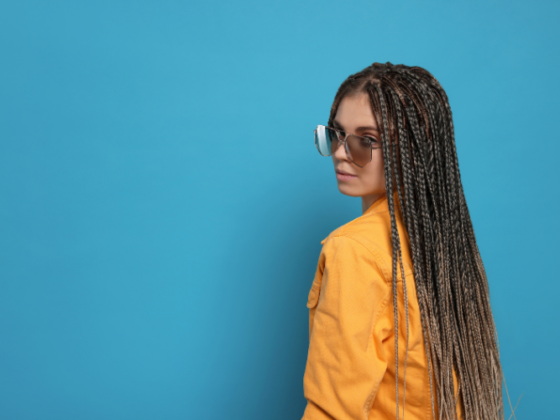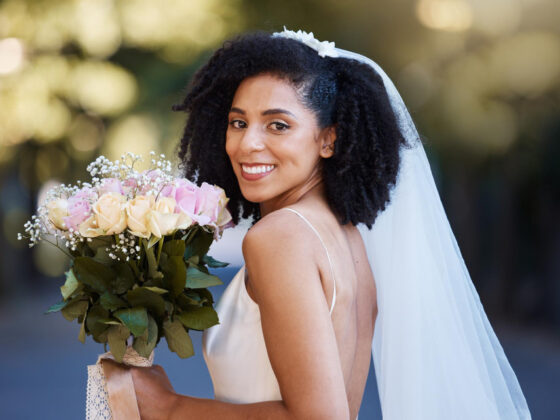You’ve noticed it – A lot of Indian girls wear braids.
At first, you assumed it was a coincidence, but after a while, it’s crossed your mind that maybe it isn’t.
My name is Angela. I’m of Indian origin but was born and brought up in UAE, and I’ve wondered a lot about this, too.
Because I went to a predominantly Indian school, I noticed that every girl around me braided their hair.
It became a school rule – the second your hair crosses shoulder length, it needs to be braided.
I never thought much of it back then – but as I grew up, I noticed that many Indian women with long hair often braided it.
And after doing a lot of research, I’ve discovered why many Indian girls wear braids.
It’s not a 1-dimensional answer; there are a lot of aspects to this, so let’s dive in!
This post contains affiliate links, meaning I may make a commission at no extra cost to you if you decide to click on a link and purchase something. Click here to read the full disclaimer.
1. Cultural tradition
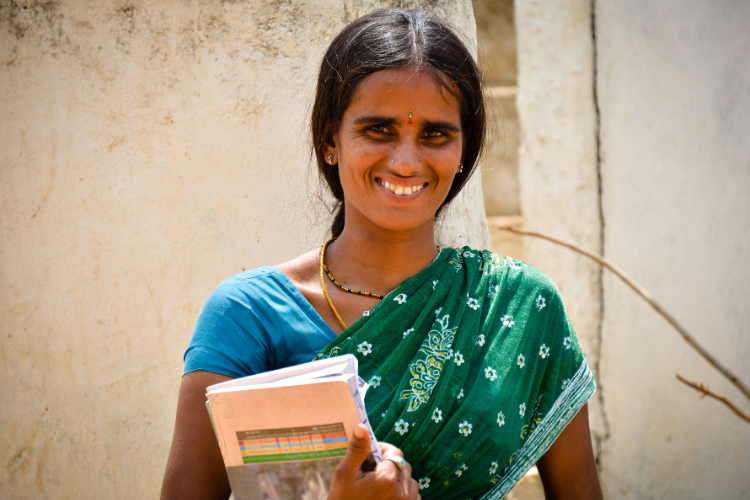
So, braiding hair as a cultural tradition varies widely.
India is a very diverse country.
Many people assume that all Indians are Hindus (a religion very common in India), but there are a lot of Christians, Muslims, Jains, and Buddhists as well.
We fall in the minority – but we do exist.
Christian, Muslim, and Hindu women also braid their hair.
I’ve noticed a lot of women in churches who have braided hair – so it’s more cultural than religious.
In South India, particularly in Kerala and Tamil Nadu, it is common for girls and women to wear long, thick braids adorned with flowers – mostly Jasmine.
My mum loved the smell of Jasmine.
She always sported a boy cut or shoulder-length hair, but that wouldn’t stop her from occasionally buying jasmine flowers and pinning them to her head.
In North India, you’ll find variations of braided hairstyles that are popular among different communities.
In Punjab (a state in North India), women braid their hair and wrap it with a piece of cloth called a Patka for cultural or traditional reasons. And they’re mostly Sikhs (a religion commonly followed in North India).
2. It’s a bonding practice between a mum and her daughter
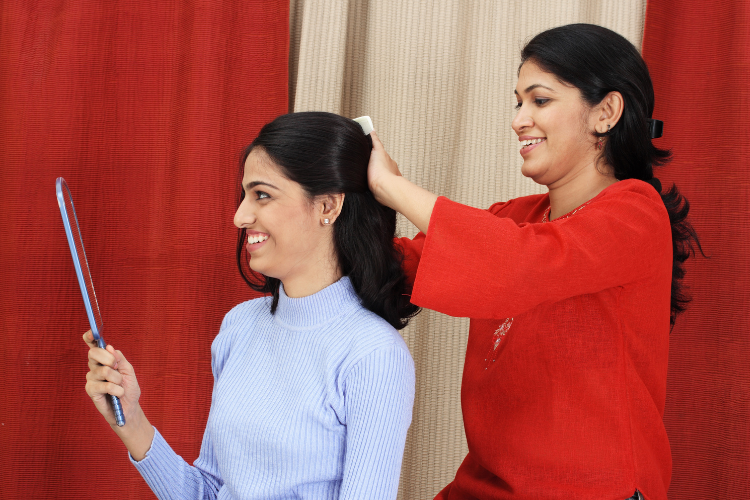
In most Indian households (irrespective of religion), mothers spend much time combing and oiling their daughters’ hair.
My mum spent a great deal of time combing and detangling my curls. She’d then apply a generous amount of coconut oil to my hair. I remember making a curly-haired comic about this once.

And more than anything, it’s a bonding experience between a mother and her daughter.
I’ve noticed this in many Asian, Hispanic, and Black cultures, not just India.
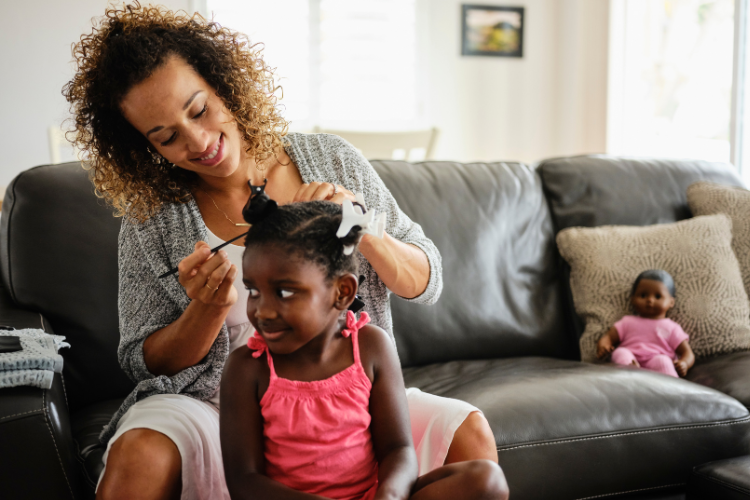
3. Practicality
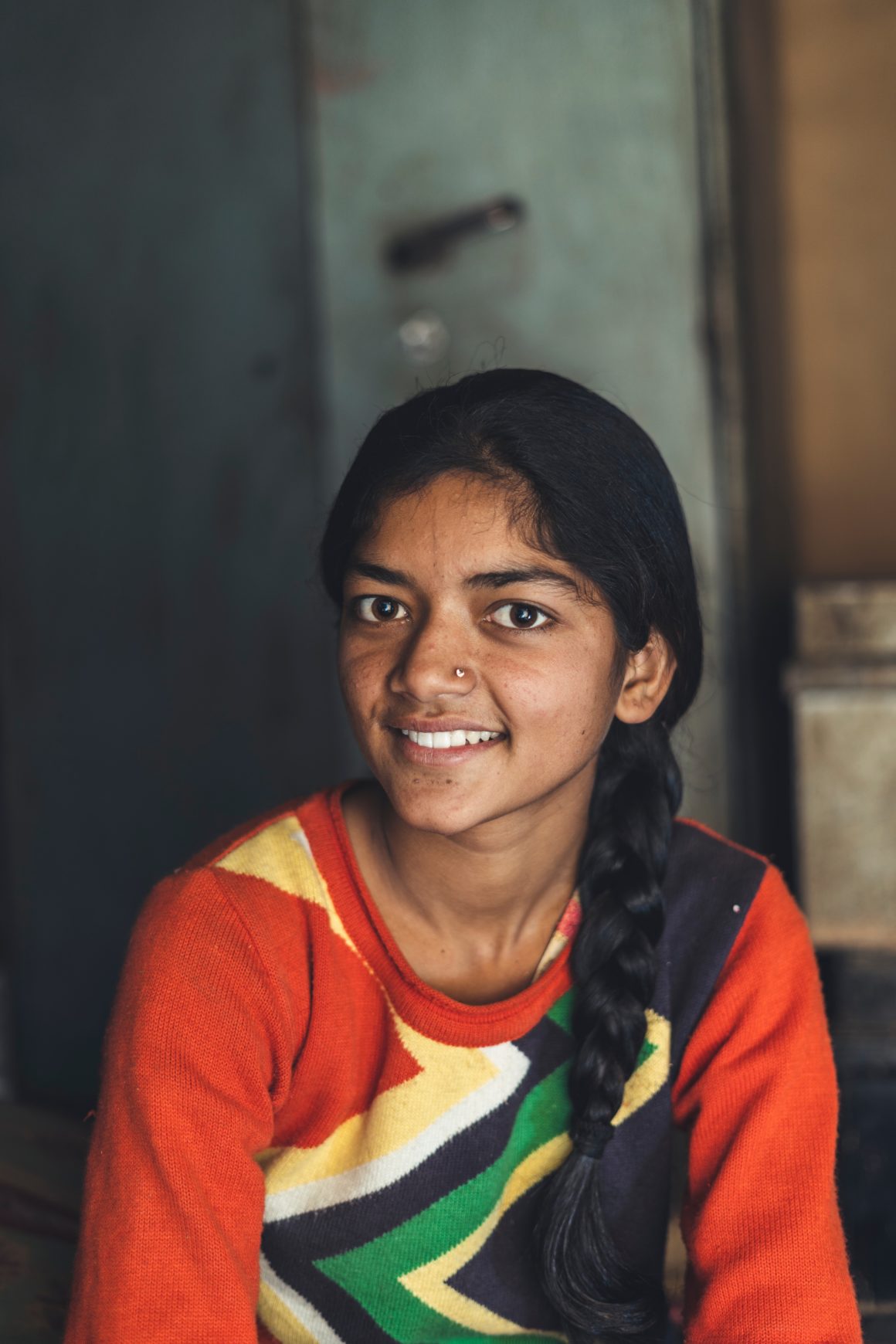
Many Indians like sporting long hair – they don’t consider it inconvenient. And braiding their hair is a practical approach. Let me give you some reasons why it’s so practical:
- Weather Conditions: India has a diverse climate, with regions experiencing extreme heat and humidity. In such conditions, loose hair can easily become unruly, sweaty, and tangled. Braiding hair helps to keep it neat and in place, preventing discomfort and the need for constant adjustments.
- Hair Management: Many Indian girls and women have long, thick hair. Managing long hair can be challenging without tying it up or braiding; braiding provides an effective solution. It keeps the hair together and reduces the likelihood of tangling, breakage, and split ends.
- Active Lifestyles: Braided hairstyles are particularly suitable for individuals with active lifestyles. Whether playing sports, engaging in outdoor activities, or working, a braid keeps the hair secure and out of the way. It minimizes distractions and ensures that hair doesn’t interfere with daily tasks.
- Preventing Hair Damage: Long hair, if left loose, can rub against clothing, furniture, or other surfaces, potentially causing damage or excessive wear and tear. Braiding protects the hair from such friction, helping to maintain its health and quality.
Basically, it’s just a very practical hairstyle. Even domestic help often braid their hair or tie it up in a bun to avoid their hair becoming a hassle while cooking or cleaning.
It just makes more sense.
4. It’s super versatile

More than culture, it’s now just become very versatile.
Indians love braiding their hair and are not afraid to experiment with different braids.
I’ve noticed a lot of women who go to the gym or run sporting fishtail braids. And some of my friends wear a waterfall braid when they go to weddings/parties.
It’s stylish, sleek, and so versatile!
Depending on the occasion, women choose to wear a braid in a way that complements their dress code. For example:
- Casual Wear: Simple braids, like a classic three-strand braid or a messy side braid, can be worn with everyday outfits.
- Formal Events: Elaborate braids, such as French or Dutch braids, can be styled more intricately and combined with updos for formal events like weddings or parties.
5. It’s aesthetically pleasing
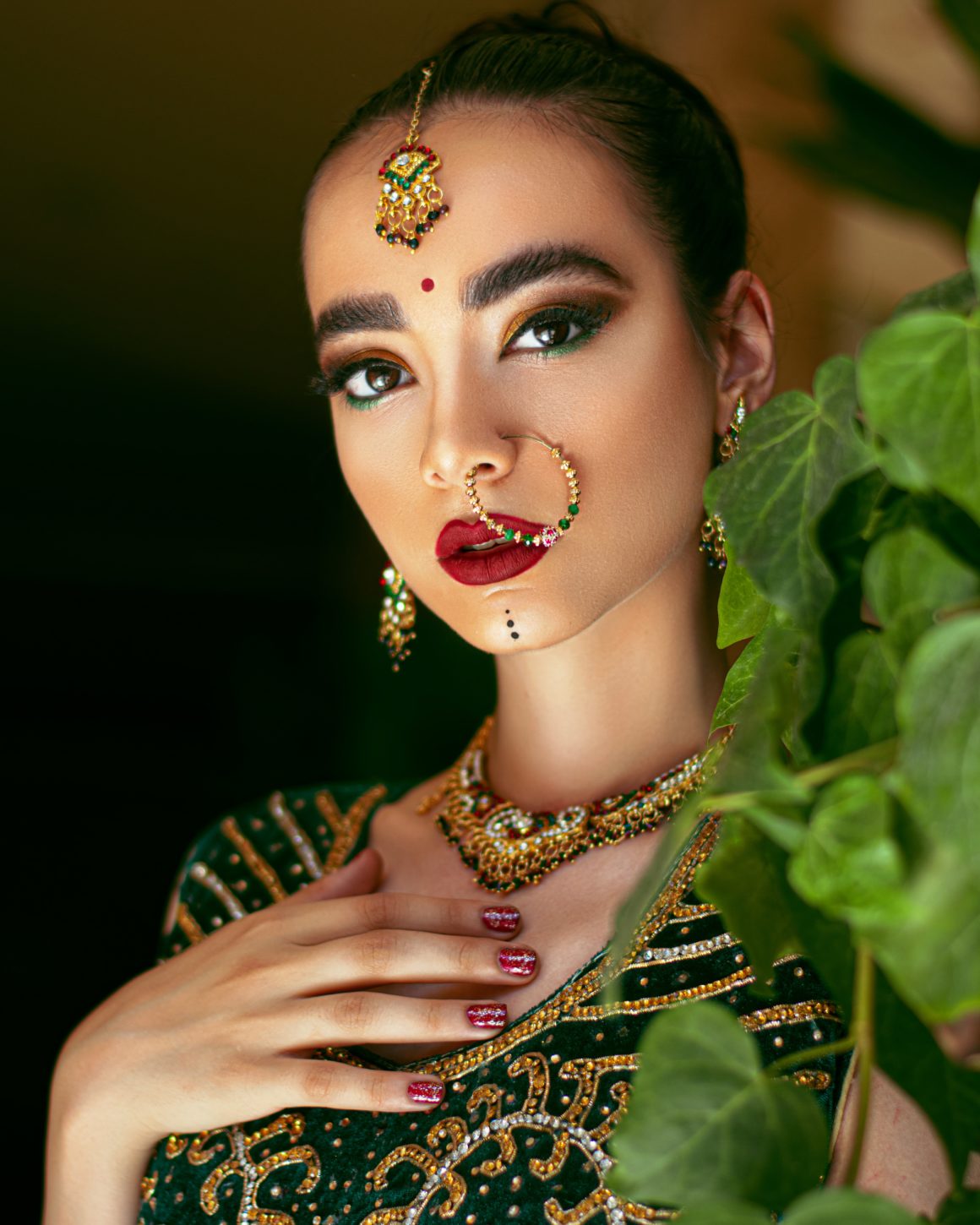
Beauty is subjective.
I’ll say that much.
People from different countries have varied definitions of beauty.
In India, long hair is considered to be beautiful and feminine to traditional men. My dad absolutely loves long hair – he’d always encourage my mom to grow her hair but she couldn’t stand it to grow beyond her shoulders.
He never forced her to wear her hair long, but I could tell her short hair was not something he preferred.
It went both ways, my mom always wanted a man with hair, and my dad had a head full of hair. Within 5 years of their marriage, he became fully bald.
So, it was definitely something both of them had to compromise on because their relationship was worth more than hair.
In India, braids are commonly associated with an elegant and sophisticated look. A sari and a long braid complete this look. This is why a lot of Indian women also braid their hair for weddings.
The intricate weaving of hair strands creates a visually captivating pattern that can elevate one’s overall appearance.
Conclusion
Braids aren’t as common as they used to be in the last few years.

More and more women are cutting their hair because short hair is more convenient and less cumbersome.
The curly hair community I’m a part of usually sports short hair. Most of my Indian friends have short hair.
So, it’s very subjective.


